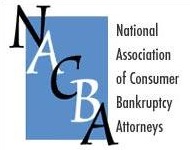The debtor passed the means test but lost a motion to dismiss for abuse of the bankruptcy system. Schedule J, the debtor’s projected future expenses, showed a monthly excess of $500. Dollars to doughnuts, the debtor’s bankruptcy lawyer followed the form and the budget provided by the client. Dismissal resulted.
What happened here? Two things: debtor’s lawyer accepted the categories on the official form as the only allowable expenses. Then the debtor, either out of inattention or a desire to be seen as living frugally, put minimalist numbers for expenses. Lawyer doesn’t see the bombshell in having a self declared excess and files the schedule.
How to avoid such disasters? First, the official form is not an exclusive list of expenses. Note that there are no categories for vacations, kids school activities, repair and replacement of household goods, pet care, grooming, yard care, etc. If you look at the elements that make up the IRS standards, you find allowances for housekeeping supplies (cleaners, toilet paper, etc.). Add those to the Schedule J expenses. Look at the expense categories on the B-22. Several of them don’t appear on J.
Local culture and the world view of trustees will color what is seen as acceptable expenses where you practice. But remember that trustees, panel and UST, are only advocates for their position. They are not the ultimate decision makers; the judge makes the final call. Don’t be afraid to present a realistic budget for your client and be prepared to advocate it to the judge.
The second problem is the client who thinks that he gains credibility by proposing a budget that is unrealistically spare. Consider that the budget here is the yardstick for whether the debtor spends 3-5 years in a Chapter 13. While a debtor might get by with $75 in health care expenses for a while, chances are that over 5 years, there will be some event that will blow that number as an average monthly expense. Same scenario for car repairs, clothing, etc.
An effective bankruptcy lawyer is not bound to accept without question the debtor’s figures on these issues. You can’t replace the client’s input with your own, but the value you add to the process is your critical review of the client’s submission. Probe and question numbers that seem unrealistic.
I start from the proposition that if my client’s budget leaves a fat figure at the bottom of I and J, I have just challenged the various trustees to contest my client’s right to a Chapter 7 discharge. A good result for the client is much more likely to result if I put real-world budget numbers on J, and prepare to defend them if necessary.








At the beginning of practicing bankruptcy I did not question the numbers my clients put down, not realizing that sometimes clients are thinking “what numbers are they looking for” instead of listing expenses that reflect reality.
You mention vacations as an example of missed expense. How do you advocate a vacation for someone who is filing for bankruptcy? I think that will attract more attention from the trustee and the judge than it’s worth.
Fold it into recreation. Or just list it up front and let the UST advocate for five years without a break! I don’t think you can justify foreign travel or a cruise, but a camping trip or a tour by car doesn’t offend. Do you think your debtors aren’t taking some sort of vacation now?
My point is that if you leave a hunk of money on the bottom line, you will draw more trouble than the fight over what kind a vacation a debtor gets.
Listing cigarettes on Schedule J can get some nice comments too.
Cathy…you are a gem! I just wish you had a formal practical course for beginning attorneys!
What standard is used by the Court in a Chap 11 Bankruptcy for determining ability to pay debts? Is it the amount of discretionary income or the amount of disposable income? Is the judge more dikely to deny an application if there is money left over after taxes and bills are paid, or if there is none?
Thank you.
I currently have a client-to-be who has special expenses for her medical condition (I know, should be no problem) but also has other seemingly-high expense items.
What are the criteria by which expenses should be judged?
What are the mechanics of this? Who would object and when? Then what?
Start with the B-22. Is there disposable income shown at the bottom of the form? My beginning argument is that the means test is supposed to replace the world view of each bankruptcy judge as to what is reasonable.
Are the “seemingly high expenses” discretionary? Are they indicative of an indulgent lifestyle? These things aren’t seen in a vacuum.
It is usually the UST who reviewed income/expense issues for a possible abuse challenge. If there is a resulting dispute, it can take the form of either proving up the reality of the expenses and it’s necessity, or a higher order of fight about whether the debtor gets to spend her money that way AND discharge her debts.
Cathy, great post. This is going to be useful for a current case of mine. Thank you.
Thanks for the info, very helpful. BTW, if anyone needs to fill out a “2007 Bankruptcy B6J”, I found a blank form here: “http://www.uscourts.gov” and also here “form 6 J“